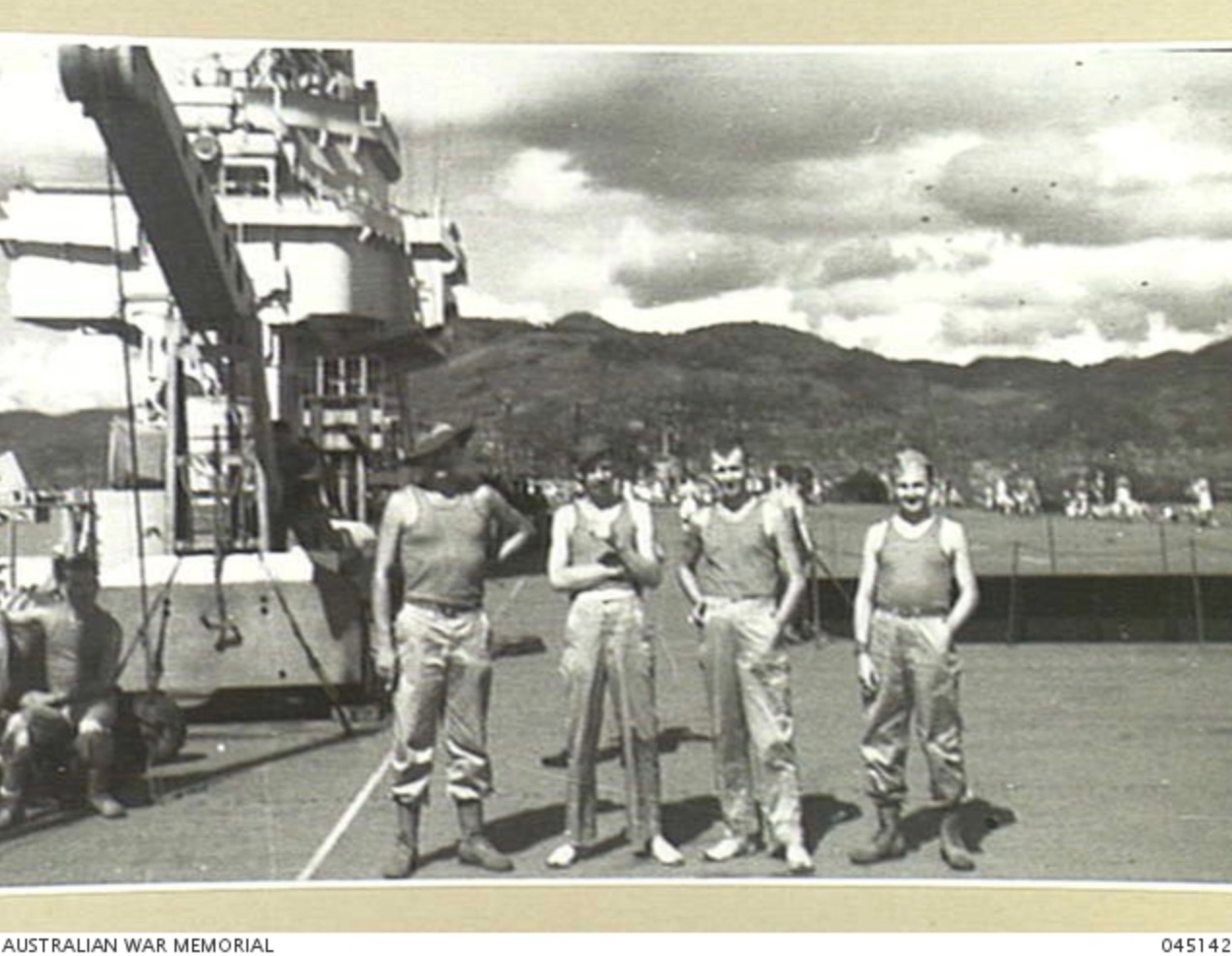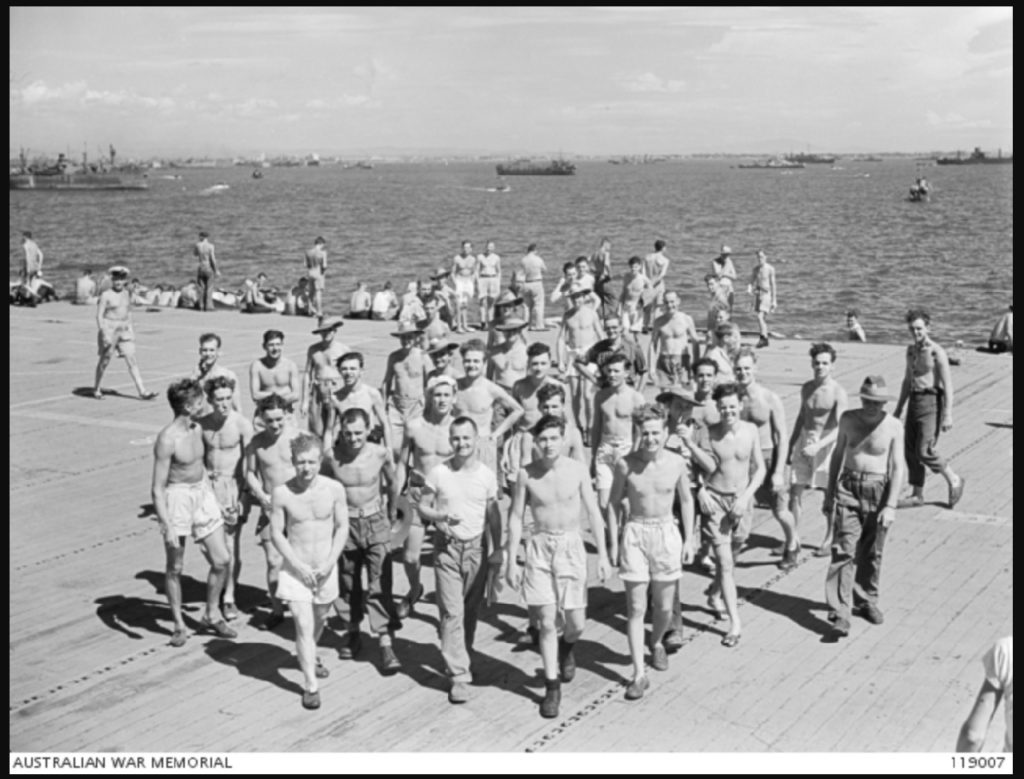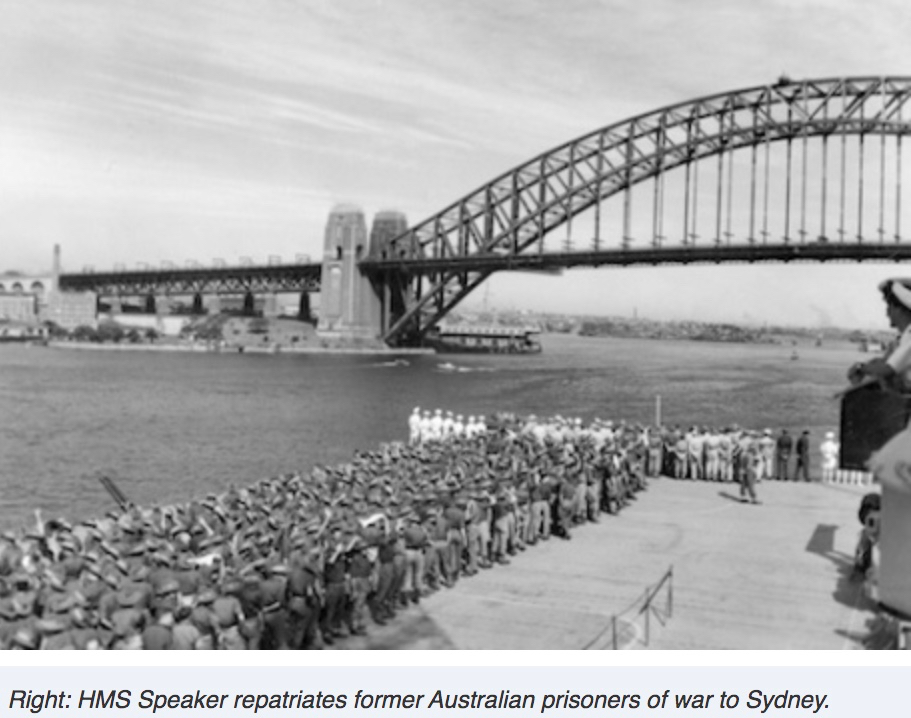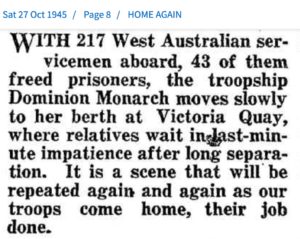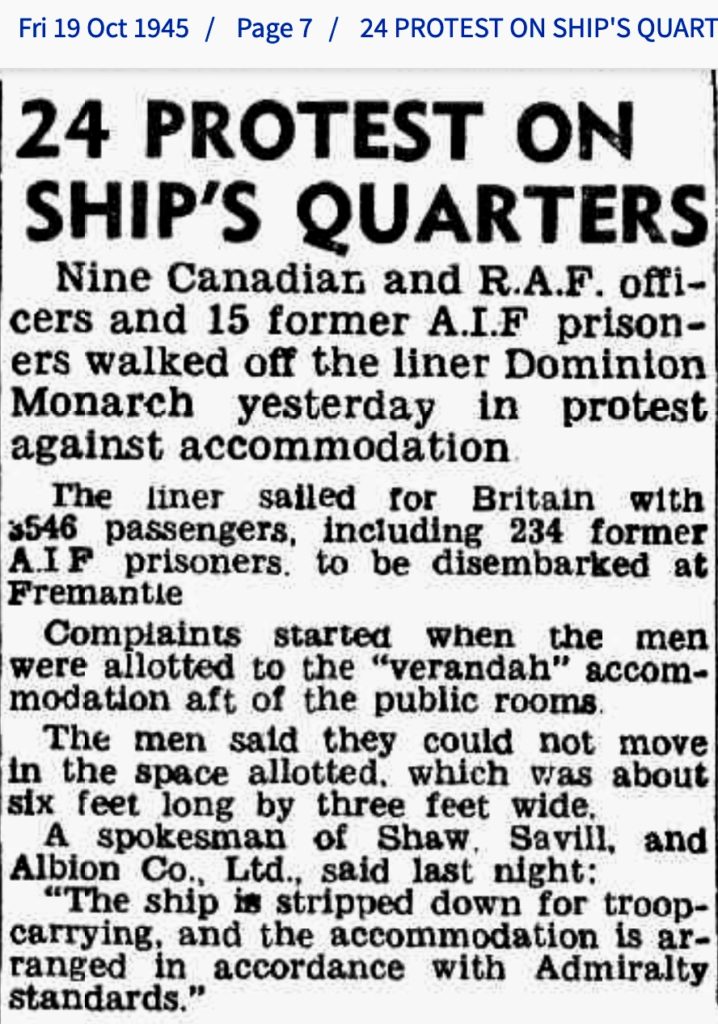
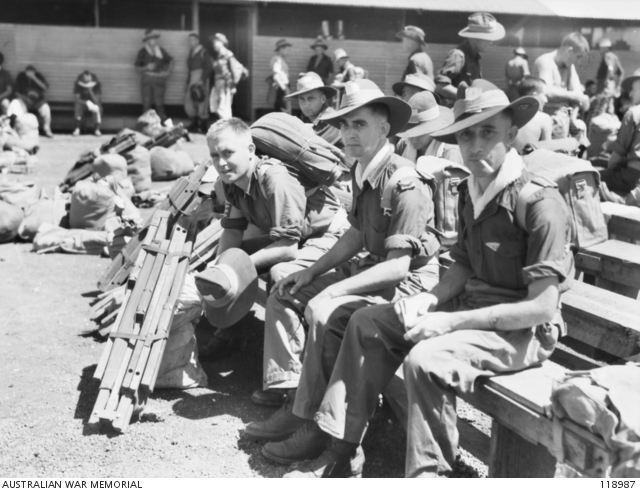
Australian ex-prisoners of war en route from Japan at the 3rd Australian Prisoner of War Reception Group Camp. Identified, left to right: WX10104 Sergeant H. Jacobs (Perth WA), 2/4th Machine Gun Battalion; SX8679 Private (Pte) Harold William Nilson (Adelaide SA), 2/3rd Machine Gun Battalion; VX38230 Pte James Arthur Newman, 2/3rd Machine Gun Battalion waiting to embuss at No 8 Camp for embarkation on HMAS Speaker.

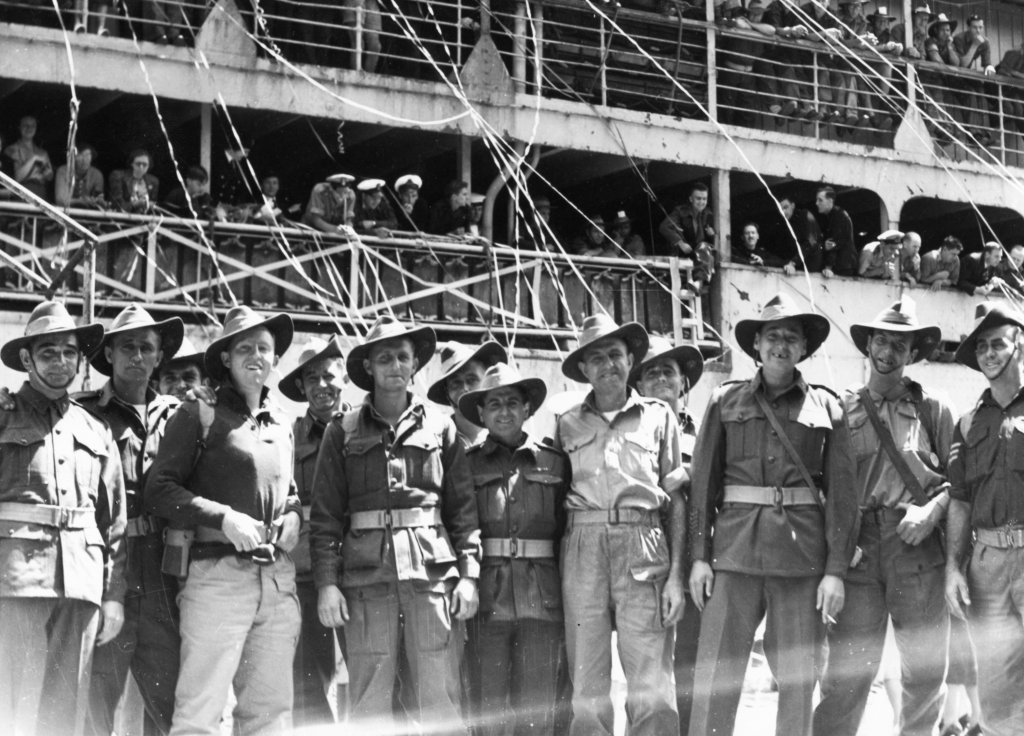
The above men are believed to be 2/4th at Sydney Wharf. Do you recognise anybody? Please let us know (email: 2nd4thmgb@gmail.com). 2nd from Right: ‘Cowboy’ Matthews.
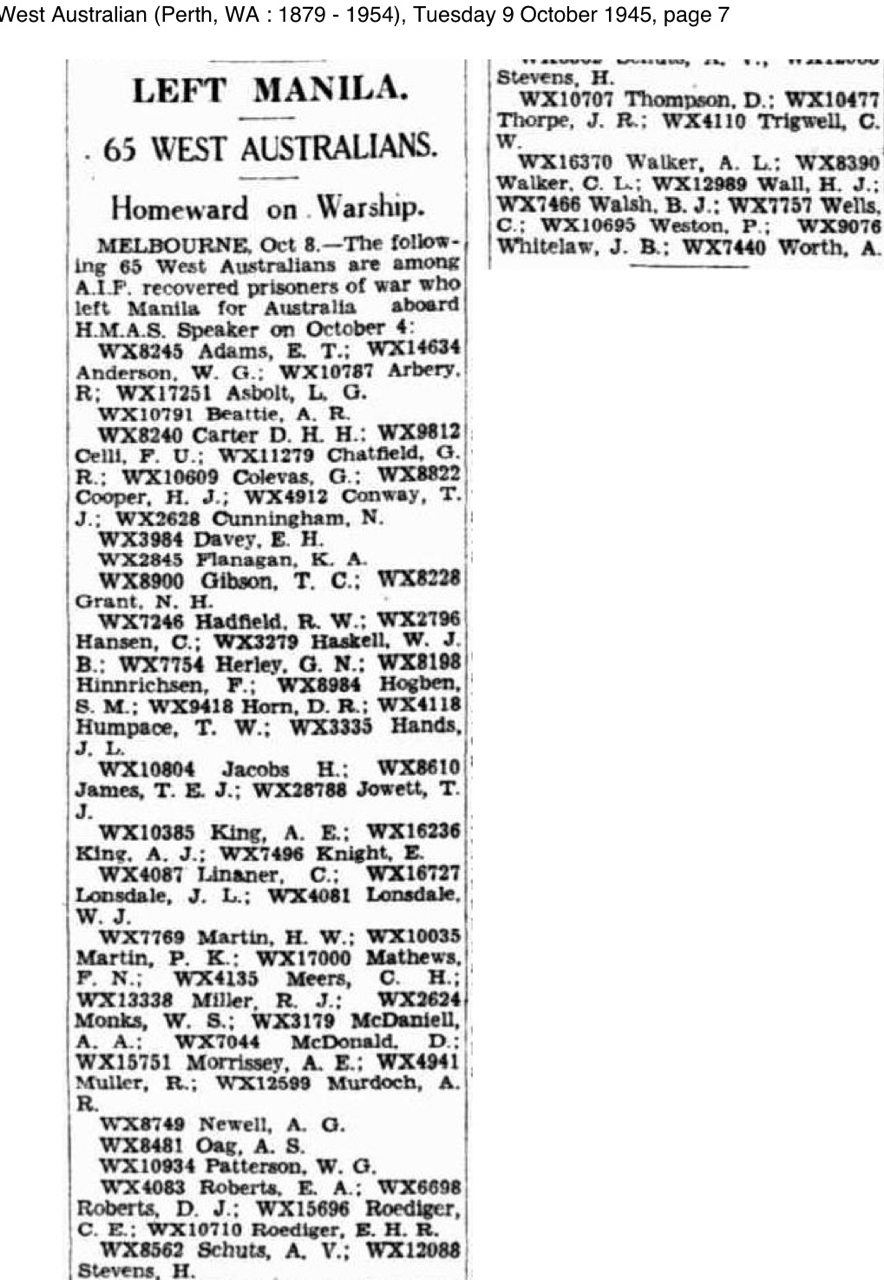
33 of the above 65 West Australians were from 2/4th:
WX8245 Adams E.T.
WX14634 Anderson W.G.H.
WX10787 ARBERY R.E.
WX17251 ASHBOLT L.G.
WX10797 BEATTIE A.R.
WX8240 CARTER D.H.
WX11279 CHATFIELD G.K.
WX10609 COLEVAS J.V.
WX8822 COOPER H.J.
WX4912 CONWAY T.J.
WX8900 GIBSON T.C.
WX8228 GRANT N.H.
WX7246 HADFIELD R.W.
WX8198 HINNRICHSEN F.
WX8984 HOGBEN S.M.
WX9418 HORN D.R.
WX10804 JACOBS H.
WX8610 JAMES T.E.J.
WX16236 KING A.V.
WX16727 LONSDALE J.L.
WX17000 MATTHEWS F.N.
WX13338 MILLER R.J.
WX159751 MORRISSEY A.E.
WX4941 MULLER R.
WX12599 MURDOCH A.R.
WX8749 NEWELL A.G.
WX8481 OAG A.S.
WX8562 SCHUTS A.V.
WX16370 WALKER A.L.
WX12989 WALL H.J.
WX7466 B.J. WALSH
WX7557 WELLS H.C.
WX7440 WORTH A.
Many POWs from Japan travelled home to Australia by alternative means and routes from Manila.
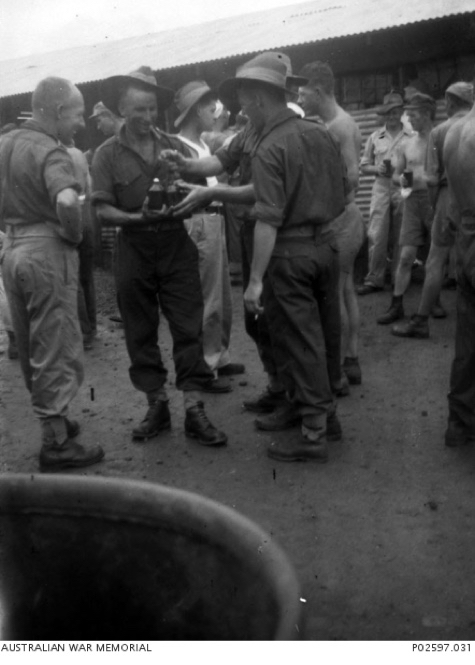
Probably Manila, Philippines. c. September 1945. Former Prisoners of War (POWs), probably of the 2/4th Machine Gun Battalion previously held at Wakinohama POW camp, stand outside a camp building, about to have a welcome bottle of beer at the No. 5 Replacement camp near Manila. They were at the camp prior to their return home. (Donor J. Lane)
Due to rough weather, the small British aircraft carrier HMS ‘Speaker’ departed Manila on 4th October 1945, a day or so later than scheduled with 556 former POWs from Japan onboard and arrived Sydney 14 October 1965.
Little-known is that the Australian Waterside Workers Union went on 36 hours strike ensuring HMS ‘Speaker’ anchored outside Sydney Heads waiting to dock. The news was kept quiet from all onboard ‘Speaker’ and for those waiting – authorities were desperate to avoid a huge confrontation between the returning former POWs, ship’s crew, those families waiting and the unionists!
One can well imagine how the former POWs would have dealt with the wharfies – they had not seen Australia and their families for more than three and a half years – most were suffering ill-effects from their ordeal and some were very ill. The former POWs were only too aware they would not have survived another winter in Japan. Their ordeal and brutal incarceration had lasted far too long and many knew they would not have survived another month let alone another Japanese winter.
Instead HMS ‘Speaker’s’ captain announced to his crew and the former POWs ‘Sydney was not yet ready for them, they had arrived ahead of their estimated schedule – the ship would undergo maintenance – the crew painting various areas of the ship!’
This was not the first time wharf strikes had taken place during Australia’s war. Official records show there were 4123 strikes in Australia, with 3662 in NSW resulting in 5,824,439 working days lost directly through strikes. Greed and corruption was rife.
Aside from days lost, there was reported pilfering/theft of food and essential parts going overseas for war equipment, go-slows and sabotage. This extraordinary history frustrated and angered not only the Australian Navy, the British and Americans had threatened to move their main port of supplies elsewhere (including New Zealand). There had been instances of naval crew loading their own goods from wharves. Also instances of confrontation between wharfies and seamen.
Many believed this saga proved such additional pressure for Australia’s wartime Prime Minister John Curtin, that it may well have been a factor in his premature death.
Interesting is the fact that the former POWs onboard, certainly from 2/4th, (and probably across Australia) remained unaware of this incident. It has been rarely referred to in personal histories. Once back in Australia, the men simply wanted to see family and friends and go home. West Australians who landed in Sydney were desperate to make their way home, seeking the fastest way available. The Government and Unions successfully ‘put away’ this part of Australia’s war-time history.
For further detailed reading we suggest ‘Australia’s Secret War: How Unionists Sabotaged Our Troops in World War II’ by Hal Colebatch, published by Quadrant Books.
“There were the radio valves pilfered by waterside workers in Townsville which prevented a new radar station at Green Island from operating.
So when American dive bombers returning from a raid on a Japanese base were caught in an electrical storm and lost their bearings, there was no radio station to guide them to safety. Lost, they ran out of fuel and crashed, killing all 32 airmen.
Colebatch quotes RAAF serviceman James Ahearn, who served at Green Island, where the Australians had to listen impotently to the doomed Americans’ radio calls:
“The grief was compounded by the fact that had it not been for the greed and corruption on the Australian waterfront such lives would not have been needlessly lost.” Read this review of Colebatch’s book.
https://www.dailytelegraph.com.au/news/opinion/unions-exposed-as-war-saboteurs/news-story/b0536e441fefb1d8327e251a2
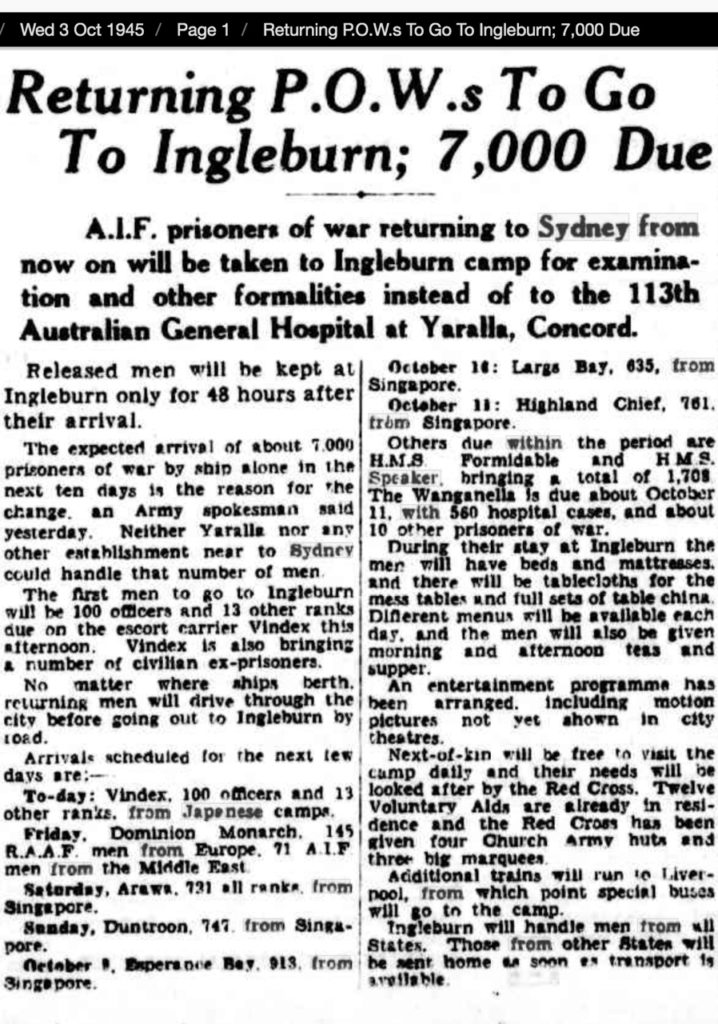
below; Speaker loading POWs Nagasaki taking to manila.
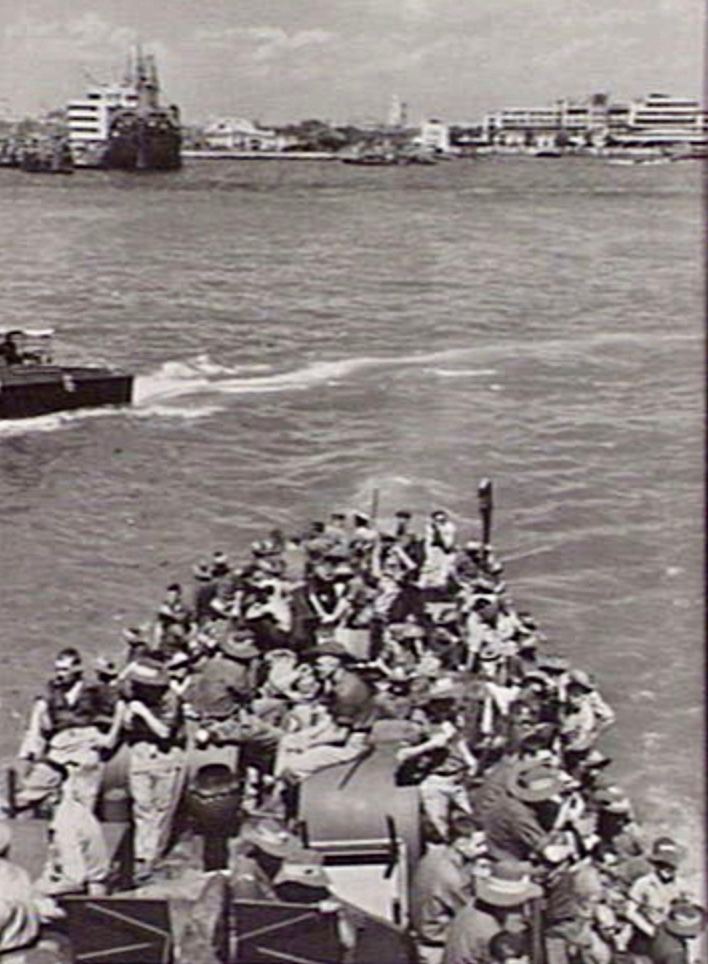


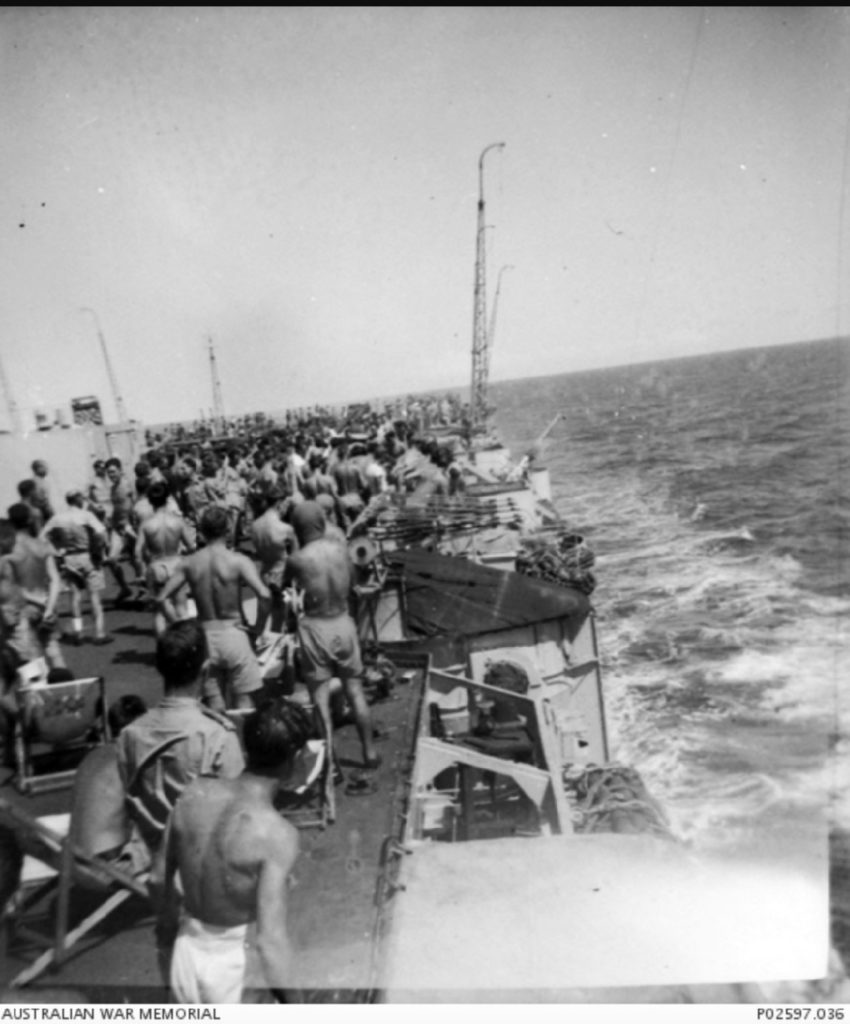
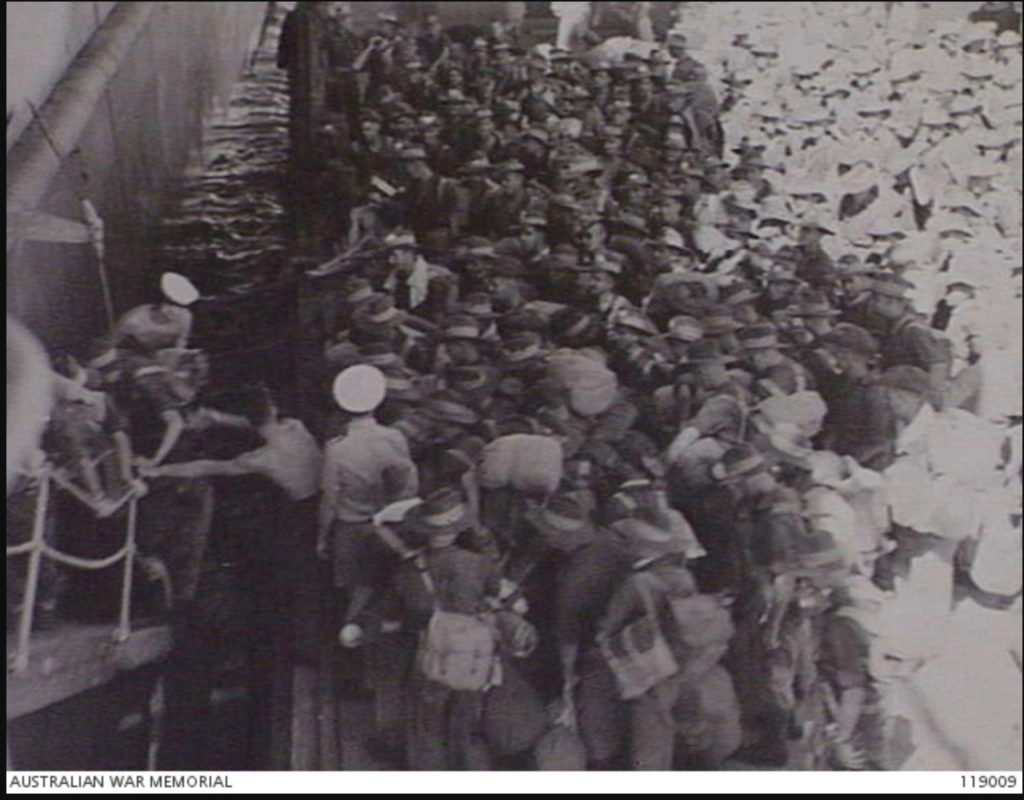
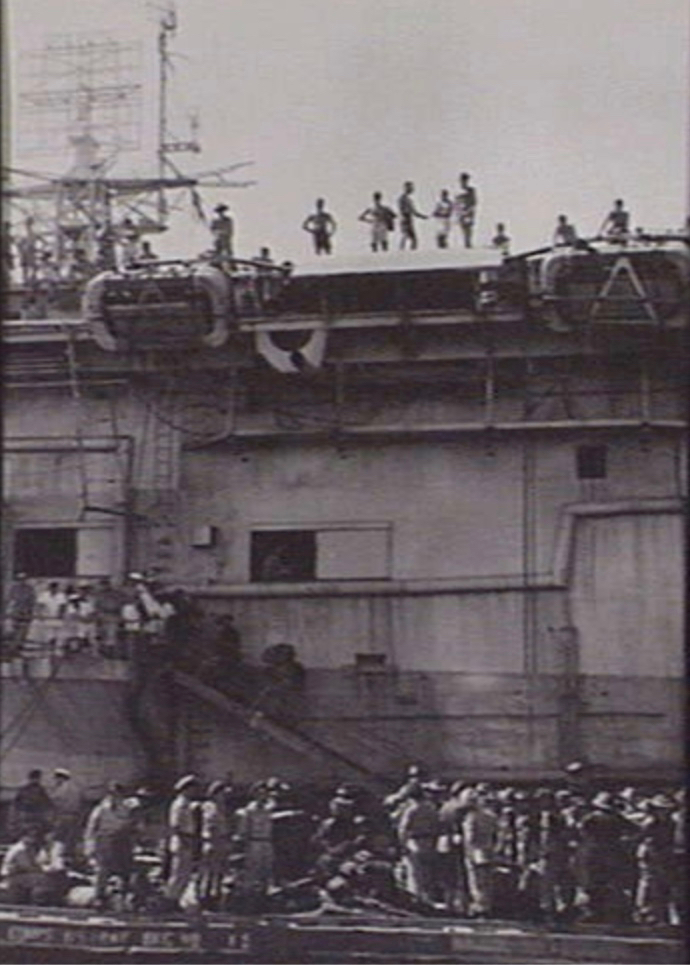
Below: Speaker at Manila
